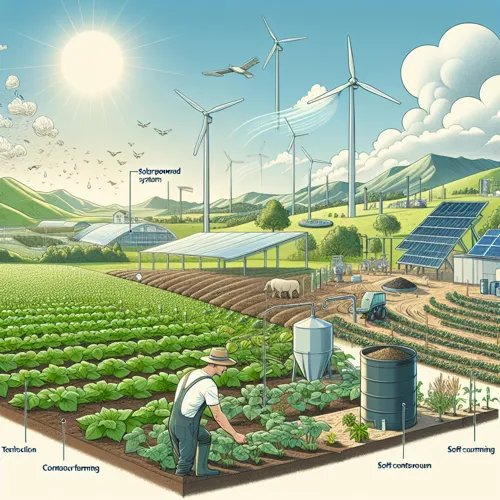In the face of rapidly changing climate patterns, sustainable farming emerges as a beacon of hope for the future of agriculture. By implementing resilient practices that harmonize with nature’s processes, we can work towards climate adaptation while ensuring food security for generations to come. In this post, we explore five key topics in sustainable farming practices designed to bolster climate resilience: soil health, diversified crop production, regenerative livestock management, conservation tillage techniques, and the strategic use of cover crops.
Soil Health
Healthy soil is essential for the success of any farming venture. By nurturing our soils, we can increase their capacity to sequester carbon and provide nutrients needed by plants. Adopting sustainable methods such as no-till agriculture and crop rotation promotes a thriving ecosystem of microbes, earthworms, and other beneficial organisms that contribute to soil fertility. These practices also help to maintain the structure and water-holding capacity of the soil, allowing it to better withstand periods of drought or heavy rainfall.
Diversified Crop Production
Growing a wide range of plant species in the same area can enhance overall crop resilience by providing natural protection against pests and diseases. This technique, known as agroecology, involves selecting plant varieties that grow well together, suppress weed growth, and complement one another’s nutrient requirements. By incorporating diverse crops into their farming systems, farmers can reduce their dependence on synthetic fertilizers and chemical pesticides while increasing yields in a changing climate.
Regenerative Livestock Management
Caring for the land begins with responsible livestock management practices. In addition to providing meat, dairy, and wool products, livestock also play a crucial role in maintaining healthy ecosystems. Grazing animals help control invasive species, improve grassland health, and return nutrients to the soil through natural manure deposits. Sustainable livestock management involves carefully monitoring animal movements, providing adequate resting periods for pastures, and implementing humane slaughter techniques. By treating their livestock with respect and care, farmers can promote better overall health outcomes and reduce the environmental impact of farming activities.
Conservation Tillage Techniques
Conventional tillage practices, such as plowing or discing, expose the soil surface to wind and water erosion, contributing to soil degradation over time. Conservation tillage methods, on the other hand, minimize soil disturbance by preserving its natural structure. Reduced-till or no-till systems promote the formation of aggregates, enhance water infiltration rates, and reduce greenhouse gas emissions associated with soil carbon loss. By adopting these techniques, farmers can create a more sustainable foundation for long-term crop productivity.
The Strategic Use of Cover Crops
Cover crops are an effective way to maintain soil fertility and reduce erosion during fallow periods or in between cropping seasons. These non-harvested plants act as natural living mulch, preventing weeds from germinating and helping to keep the soil moist throughout the growing season. When properly incorporated into a crop rotation plan, cover crops can also help build organic matter, improve soil structure, and protect against nutrient leaching or runoff. This multipurpose practice promotes resilience in the face of climate uncertainty while boosting overall ecosystem health.
Conclusion
In conclusion, sustainable farming practices are critical to promoting climate resilience across diverse agroecological landscapes. By prioritizing soil health, diversifying crop production, managing livestock responsibly, utilizing conservation tillage techniques, and strategically employing cover crops, farmers can build more resilient systems capable of withstanding the challenges posed by a rapidly changing climate. Embracing these principles is not only essential for securing food security in an increasingly unpredictable world; it is also necessary to safeguard the long-term viability of our planet’s ecosystems and natural resources
